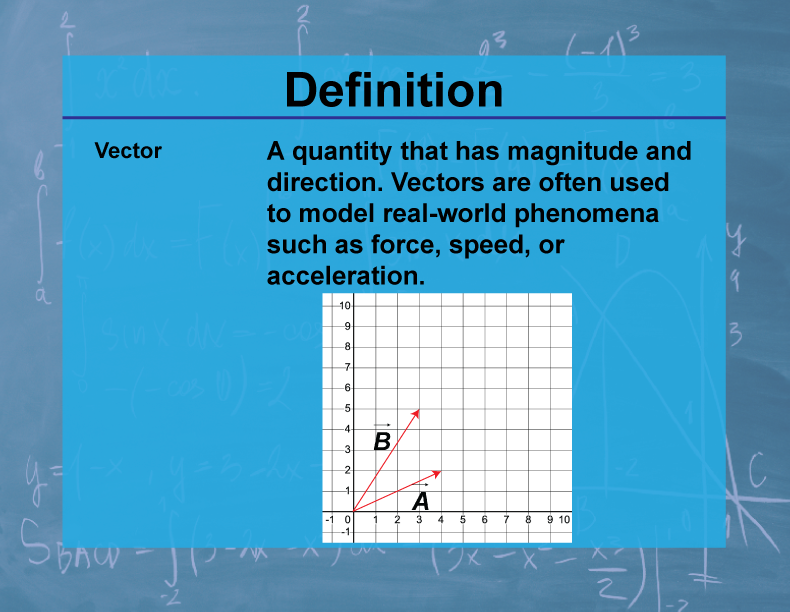
Display Title
Definition--Calculus Topics--Vector
Display Title
Definition--Calculus Topics--Vector

Topic
Calculus
Definition
A vector is a quantity that has both magnitude and direction. It can be represented geometrically as an arrow in space or algebraically as an ordered set of numbers.
Description
Vectors are fundamental in calculus, particularly in multivariable and vector calculus. They are used to describe physical quantities like force, velocity, and acceleration, and are essential in fields such as physics, engineering, and computer graphics. In calculus, vectors allow for the extension of concepts like derivatives and integrals to multiple dimensions.
In mathematics education, understanding vectors helps students transition from scalar quantities to more complex representations of mathematical objects. Vectors introduce the concept of direction in addition to magnitude, providing a more complete description of many physical phenomena. They also serve as a foundation for understanding more advanced topics like vector fields and differential geometry.
Teacher's Script: "Let's consider a boat crossing a river. Its motion is affected by both the boat's engine and the river's current. We can represent these as vectors. The boat's velocity relative to the water might be 〈3, 0〉 m/s (3 m/s east), while the river's current is 〈0, -2〉 m/s (2 m/s south). How can we find the boat's actual velocity relative to the shore? This is where vector addition comes in. Can you think of other scenarios where we might need to consider both magnitude and direction of quantities?"

For a complete collection of terms related to Calculus click on this link: Calculus Vocabulary Collection.
| Common Core Standards | CCSS.MATH.CONTENT.HSF.IF.C.7, CCSS.MATH.CONTENT.HSF.BF.A.1.C |
|---|---|
| Grade Range | 11 - 12 |
| Curriculum Nodes |
Algebra • Advanced Topics in Algebra • Calculus Vocabulary |
| Copyright Year | 2023 |
| Keywords | calculus concepts, limits, derivatives, integrals, composite functions |